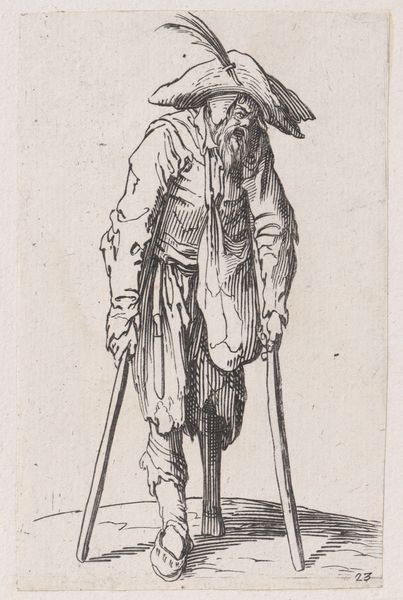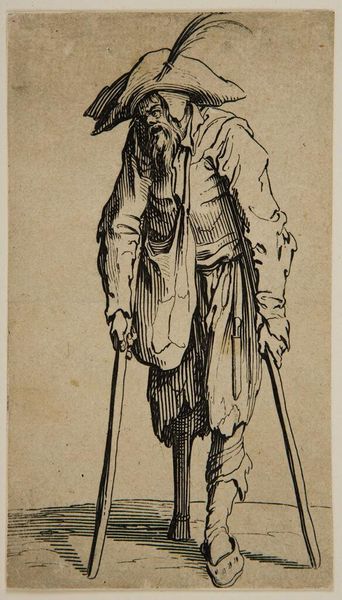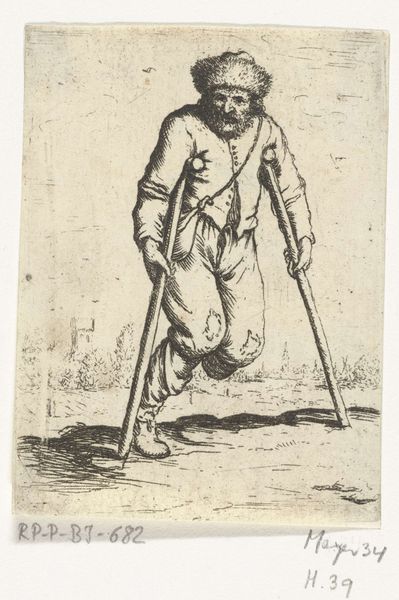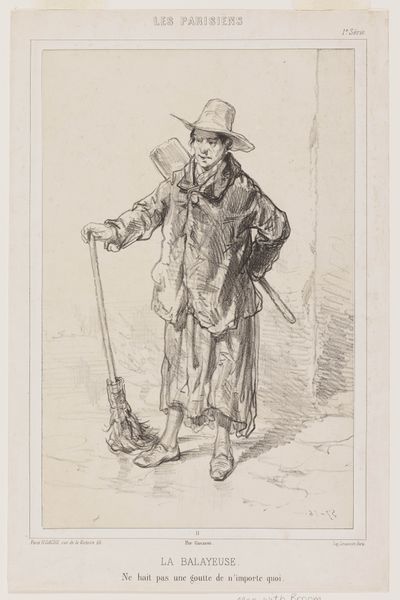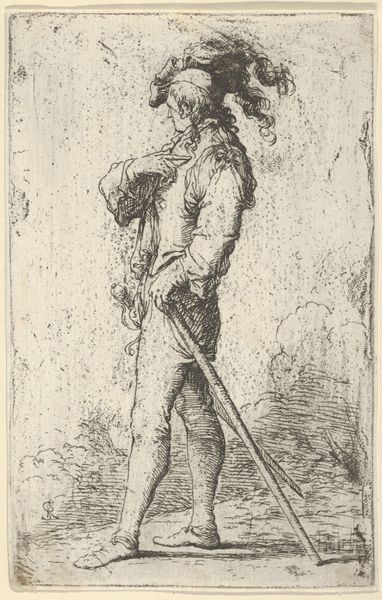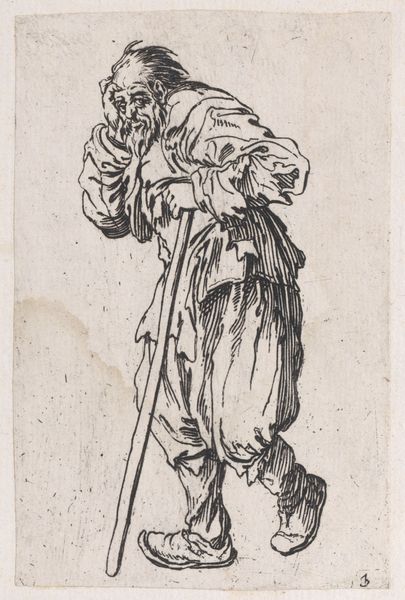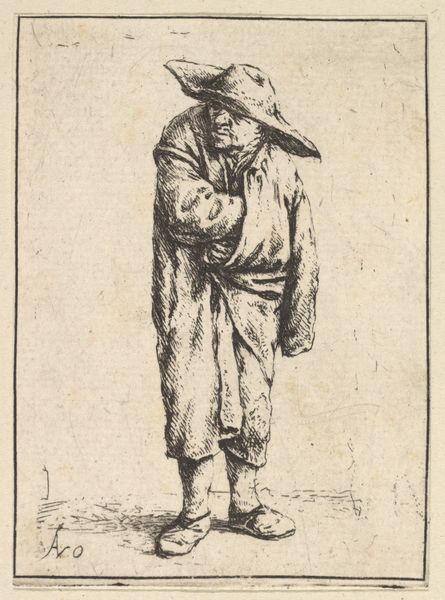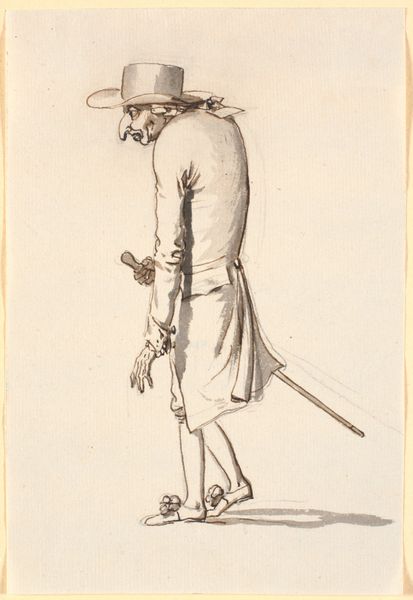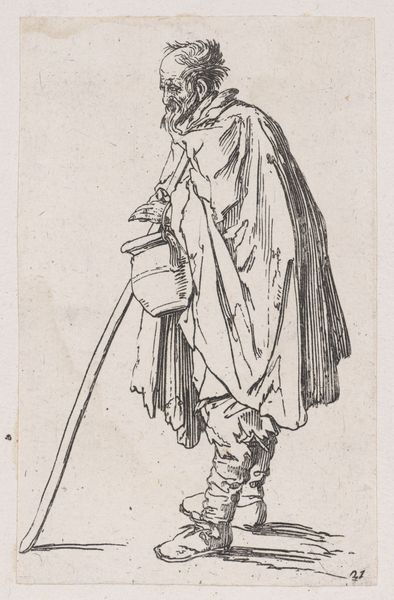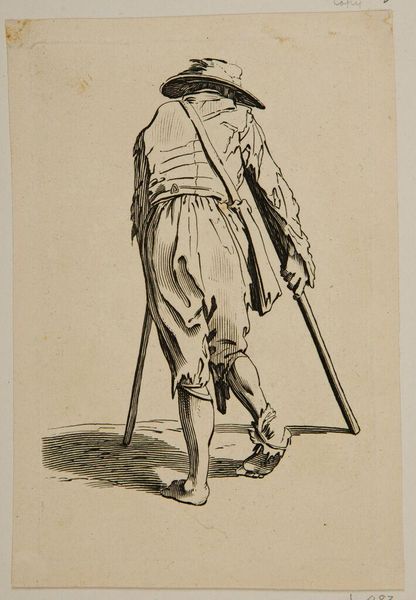
Reverse Copy of Le Mendiant a la Jambe de Bois (The Beggar with the Wooden Leg), from "Les Gueux suite appelée aussi Les Mendiants, Les Baroni, ou Les Barons" (The Beggars, also called the Barons) 1625 - 1700
0:00
0:00
drawing, print, etching
#
drawing
#
narrative-art
#
baroque
# print
#
etching
#
figuration
#
genre-painting
Dimensions: Sheet: 5 3/16 x 3 9/16 in. (13.2 x 9 cm)
Copyright: Public Domain
This is an anonymous print of a beggar with a wooden leg, part of a series called "The Beggars," made using etching, a printmaking technique, most likely in France or the Netherlands sometime in the 17th century. Prints like these offer insights into the social realities of the time. The image of the beggar, rendered with stark lines, invites us to consider the lives of those on the margins of society. The setting, a town with houses and other figures in the background, creates a narrative about the relationship between poverty and the larger community. The series title "The Beggars, also called the Barons" is intriguing, suggesting a kind of ironic commentary on social hierarchy. This was a time of vast disparities in wealth and status and images like these can be seen as challenging the status quo. To fully understand this print, we need to research the history of poverty in 17th-century Europe, looking into popular literature, accounts from the time, and studies of social life. Art history is intertwined with social history, and each helps us understand the other.
Comments
No comments
Be the first to comment and join the conversation on the ultimate creative platform.
